We finished our day out in Walthamstow with a visit to the Vestry House Museum, which focuses on the heritage of the local area and houses the Waltham Forest Archives and Local Studies Library.
The building dates back to 1730, when Walthamstow was a picturesque London village, as opposed to the bustling suburb it is today. Its original function was as a workhouse containing 20-30 paupers, and also as the meeting place for the local government of the period, which were known as the Vestry.
The Watch- an 18th century forerunner to the police force- also operated from the building at the same time, until the paupers left the building for the West Ham Union Workhouse in 1840. The Metropolitan Police then operated from the site for some 30 years.
When the police left the building became a warehouse, then the headquarters of the Walthamstow Literary and Scientific Institute and then a private house.
In 1930 Walthamstow Borough Council took over some of the building and established Vestry House Museum of Antiquities. The venture became successful and, in 1933, the council acquired the freehold of the whole building, which they continued to use as a museum.
It was a very squally, changeable day weather-wise, and we had to endure brilliant, blinding sunshine one moment with winds, high velocity clouds and outbursts of rain the next.
We reached the museum by walking past St. Mary's Church, which was founded in the 12th century. It's been added to and modified over the years, and all that remains of the Norman church are some pillar bases with chisel marks on them.
I loved these elaborate but overgrown graves. 'I wouldn't mind being buried here,' I said to Dean, nostalgically...
'How about I put you in a black plastic bin bag and throw you over the wall?' was his reply. I think, by this later stage in the day, I'd started to annoy him...😉
Locals have dubbed this 15th century nearby timber-framed 'hall house' building 'The Ancient House'. The Nags Head pub sits right behind it.
The museum entrance. The white section over the doorway contains this dire (not particularly visible in this photo) warning:-
This House Erected
An. Dom MDCCXXX.
if any would not work
neither Should he eat
To the right is the shop and office, which was once the kitchen area. This gallery was once the Vestry meeting room and workhouse master's rooms.
Map of Walthamstow...
I liked these three quirky pictures!
The workhouse included a brewhouse and a bakehouse and the inmates were fed three plain meals a day with a single pint of beer (half-a-pint for children)...
The children were taught to read, write and cast accounts. Boys were trained for local trades, girls for a place in service...
Unwinding tow (used for mixing with tar and plugging holes in ships' decking) was an unpopular task as it ruined the worker's hands. I've tried to manipulate this photo as it came out blurrier than I would have liked...
Window view of the lovely garden, which still grows plants that would have been grown by the workhouse inmates in the 18th century.
Kids can dress up in simple clothing like those the workhouse children would have worn...
Chest...
In the corner are a selection of police artefacts from the time of The Watch...
These rooms upstairs used to be four bedrooms for inmates. This part is now recreation of a Victorian parlour, circa 1890. It was very hard to get a decent picture as, without a flash, the area's very dark and if you use a flash then it rebounds off the glass...
You get a ghostly Vain Old Tart reflected in this one...
These toys were manufactured, or being played with, in Waltham Forest during the 19th and early 20th centuries...
I nicknamed these rocking horses Rocky and Big Rocky. They sound like relatives of mine (think about it...)😁
The Walthamstow Tea Service (so called because it depicts local houses) was produced in the 1820s for a local well-to-do family, but not much else is known about its origins...
The Domestic Life Gallery contains items used in the house in the late 19th and early 20th centuries. My nan had items like these in her kitchen...
My nan also had a mangle like this...
...And a range like this. It brings back a distinct memory of my father leaving a plate of chips inside to keep warm- and they came out rather blackened!
1940s parlour...
My mother owned a Singer sewing machine like this, and my interest in fashion and making clothes began with me experimenting with it...
Wartime rationing...
As a kid, I remember taking one of these stone hot water bottles to bed. They certainly did the trick and were very efficient!
More kitchen implements...
Nostalgia cabinet...
The actual police cell with its bench and toilet still exists, with a scene from April 1861 recreated. Sgt. Charles Carpenter arrested James Wright for being drunk and disorderly.
The Costume Gallery, with clothing to do with 20th century sunbathing and holidays...
Georgian dress...
Second World War uniform. The panelling in this room is 16th century and was removed from Essex House during its demolition in 1933.
This was the ONE photo I wanted to get right...but it didn't come out well. It was my favourite artefact and is a wedding dress dating from January 1939. Aarrgghh!!
...But I found this PDF floating around and bad me decided to borrow it...
Making and repairing clothing...
The cabinet to the right of the Victorian dress is actually a jukebox!
Behind the clothing cabinet, the stairs lead upstairs to the Archives...
The next section shows a modern artwork textile devoted to women's suffrage and 100 years of women having the vote...
I loved this self-explanatory piece from the exhibition Motive/Motif: Artists Commemorate the Suffragettes. The artist is not known to me, but is called Amelia Rubika.
This lovely beaded piece is by Helen Storey, who is an artist, designer and professor. There are also other works by known creatives here. One of the names I recognised was modern artist Sarah Lucas.
The car was the last exhibit we saw. It was built locally by Frederick Bremer in 1892. The Bremer car is one of the claimants to being the oldest British-built petrol car and had a speed limit of just four miles per hour!
We have a curious SuperDean standing sentinel...
Outside to the lovely garden...
Down the walkway...
Direction sign...
Drinking trough...
I'm not sure of the significance of this little pool- it looks modern. But it also looks cute, so I took a photo of it!
Back view of the house...
The Watch House (or Cage) for the accomodation of prisoners overnight used to be outside, and was erected in 1765. You can still see its original location etched onto the wall...
This Grecian-style creation was once part of the General Post Office (GPO), which stood next to Postman's Park near St Paul's Cathedral. It was demolished in 1912 and this piece salvaged and offered to Waltham Forest council. I'm not sure what it was- maybe part of a column?
I've visited Postman's Park and here is the link:-
Skinny blossom tree as we left...
Vestry Road...
At the bus stop, I took this photo of Waltham Forest Town Hall. It's quite imposing and I like the decorative pool and fountain in the foreground...
Would I return? Yes- it's free to enter, not too hard to get to, and I want to get a decent photo of that wedding dress!
TTFN
The Miss Elaineous
XXXXXXXXXXXXXXXXXXXXXX
XXXXXXXXXXX
X

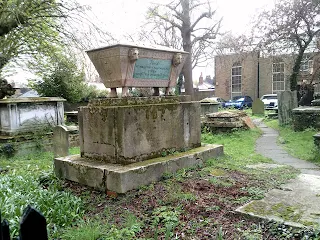










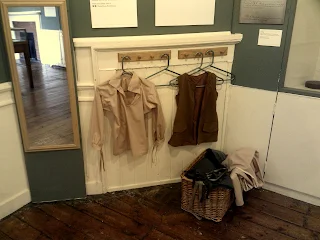












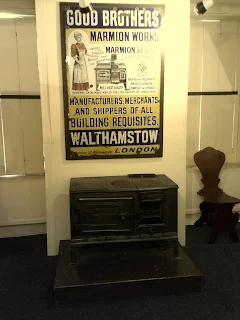


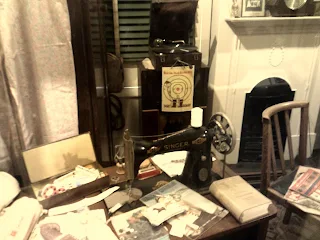



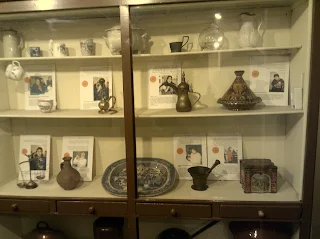







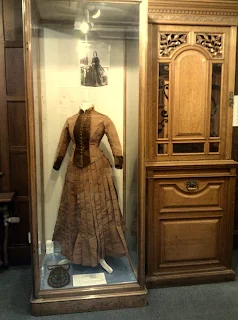









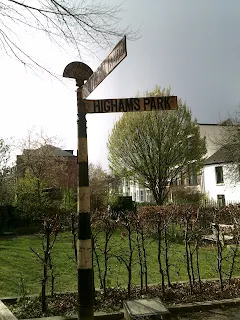








No comments:
Post a Comment